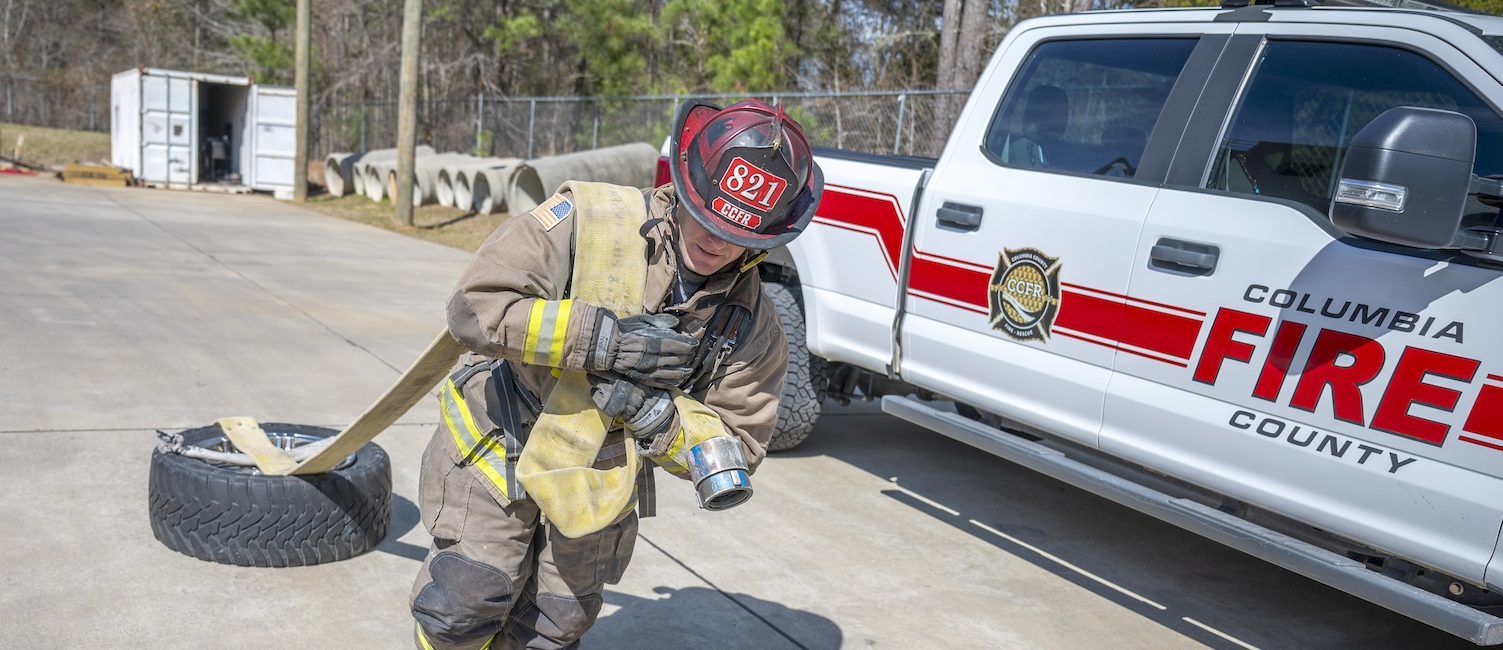Most people realize that firefighting is a hazardous career.
On a regular basis, firefighters are exposed to dangerous environments, emergency situations and irregular working hours.
Such conditions are both physically and mentally draining. But they can also be life-threatening.
Sudden cardiac death is the leading cause of duty-related deaths among firefighters in this country, said Angelia “Maleah” Winkler, PhD, an associate professor of kinesiology at Augusta University.
“Firefighters go from zero to hero,” Winkler said. “They are shift workers, so they work 24 hours at the station and 48 hours off. So, for 24 hours at the station, they’re waiting for a call. They may be doing some training during that time, but for the most part, they are lightly moving around waiting for a call. And then they have to be ramped up to 100% to supramaximal effort. That’s really hard on the system.”
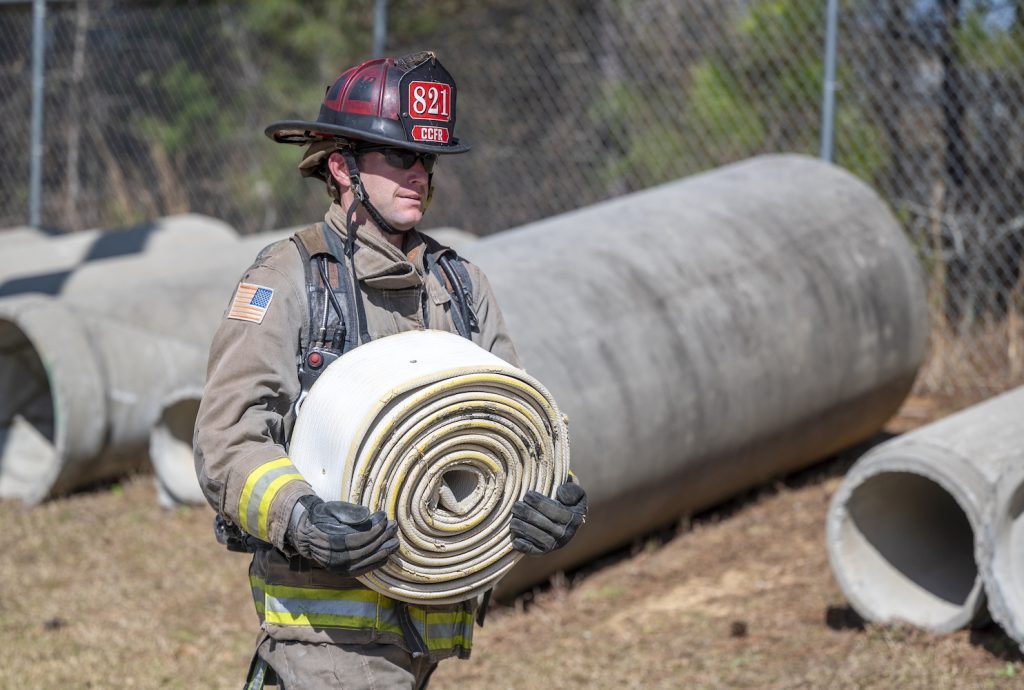
Cardiovascular disease accounts for 45% of all firefighter-duty-related fatalities in the United States, according to a recent article published by the Journal of Occupational and Environmental Medicine.
“If you’re not physically fit, that stress on your body may result in cardiac complications,” Winkler said. “Many on-duty deaths of firefighters happen from cardiac complications because their cardiovascular system can’t handle the increased intensity for prolonged periods.”
Making physical fitness a priority
A few years ago, Captain Steven Parish of the Columbia County Fire Rescue began having concerns that some of the county’s new recruits were not meeting the necessary fitness standards.
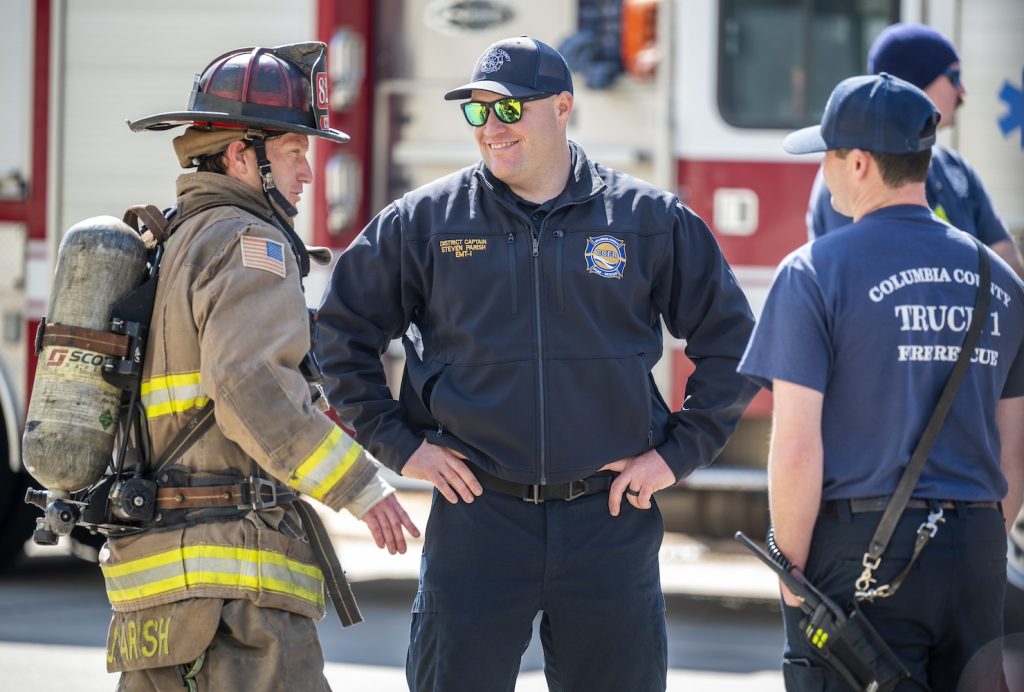
“It started with our recruit training. We were having issues where we were using our state test, which is very basic. It doesn’t really assess your overall physical fitness,” said Parish, who is the captain of stations 12 and 17 in Columbia County. “We were having issues where we were hiring personnel, and they were not meeting our standards in recruit school. They couldn’t do our basic workouts, and we were having to let people go because they could not get up to the fitness level we need on the fireground. We knew we needed to change.”
Parish, along with Columbia County’s Deputy Fire Chief Jimmie Paschal, reached out to the Department of Kinesiology at Augusta University for help.
“We know our research is having an impact, not just on the fire department, but all of Columbia County.”
Angelia “Maleah” Winkler, PhD, an associate professor of kinesiology
In 2022, Winkler and Austin Kohler, an adjunct instructor and PhD student in the Department of Kinesiology, began working with the Columbia County firefighters to implement a physical fitness test to ensure those within the department were prepared for the stress of the job.
“Basically, we are seeing how their physical fitness actually adapts as they’re implementing physical fitness tests,” Kohler said. “The testing parameters include their pushups, plank time, run time for 1.5 miles, body composition, blood pressure and strength. So those are going to be the physical assessments that are done to assess their cardiac arrest risk. Everything that is done in physical fitness is normally to reduce those risk factors associated with cardiac arrest and improve occupational performance.”
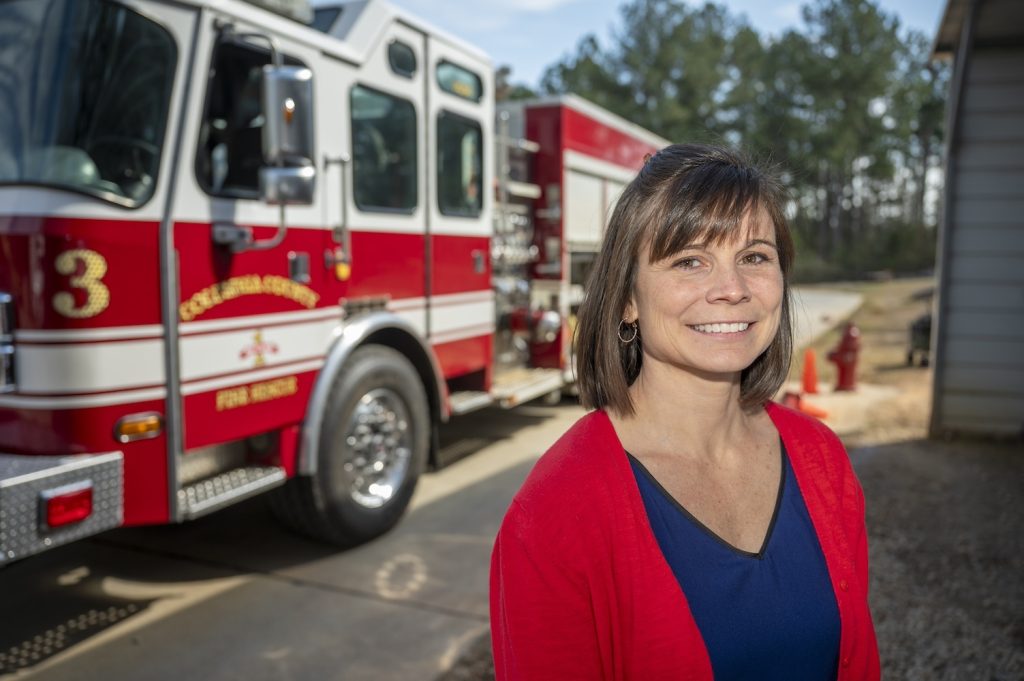
The firefighters are also tested at a fire training tower located at Station 12 in Appling, Georgia, Kohler said.
“They have to run the tower with hose packs, which is very applicable to their job,” Kohler said. “They’ll have to do a victim drag or victim rescue, which is also applicable to their job. And then a tire drag, which is moving more equipment with a hose carry, and they end the test with a Keiser sled.”
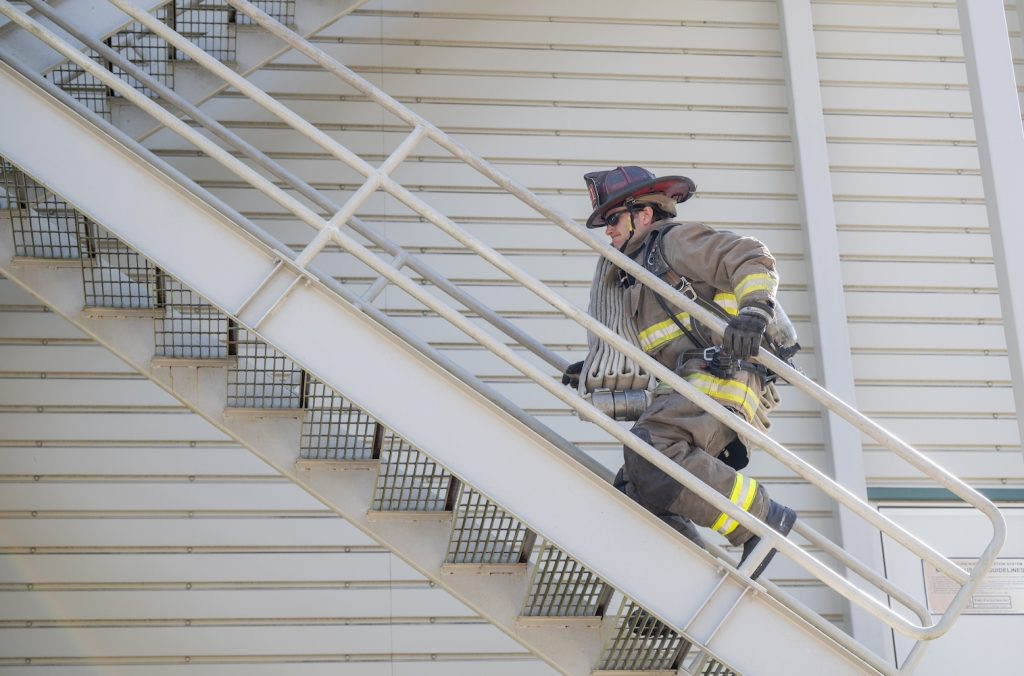
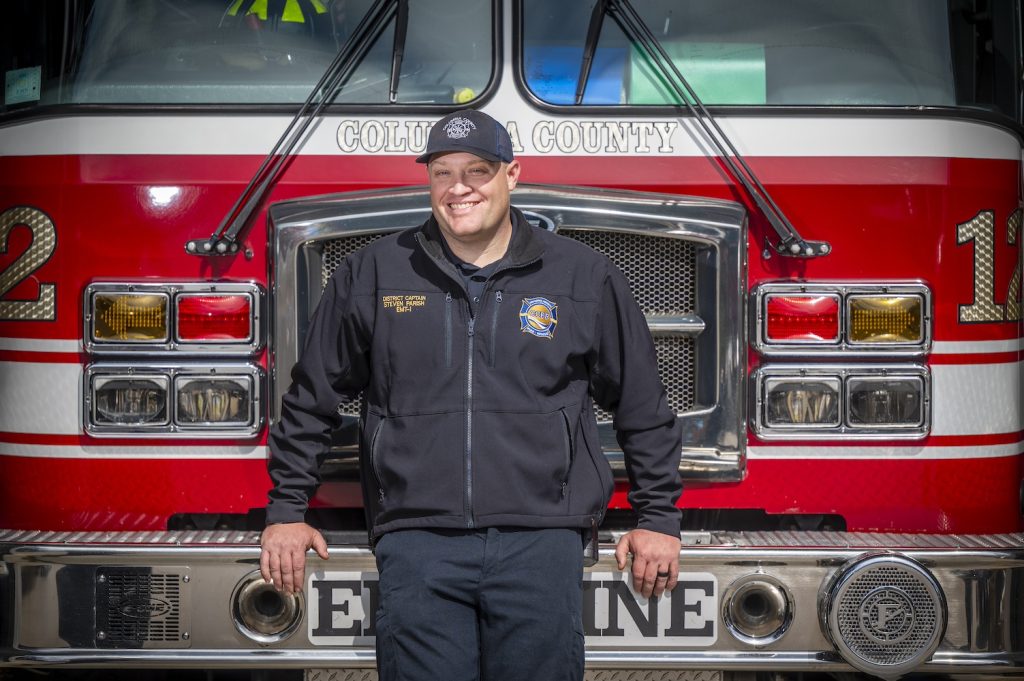
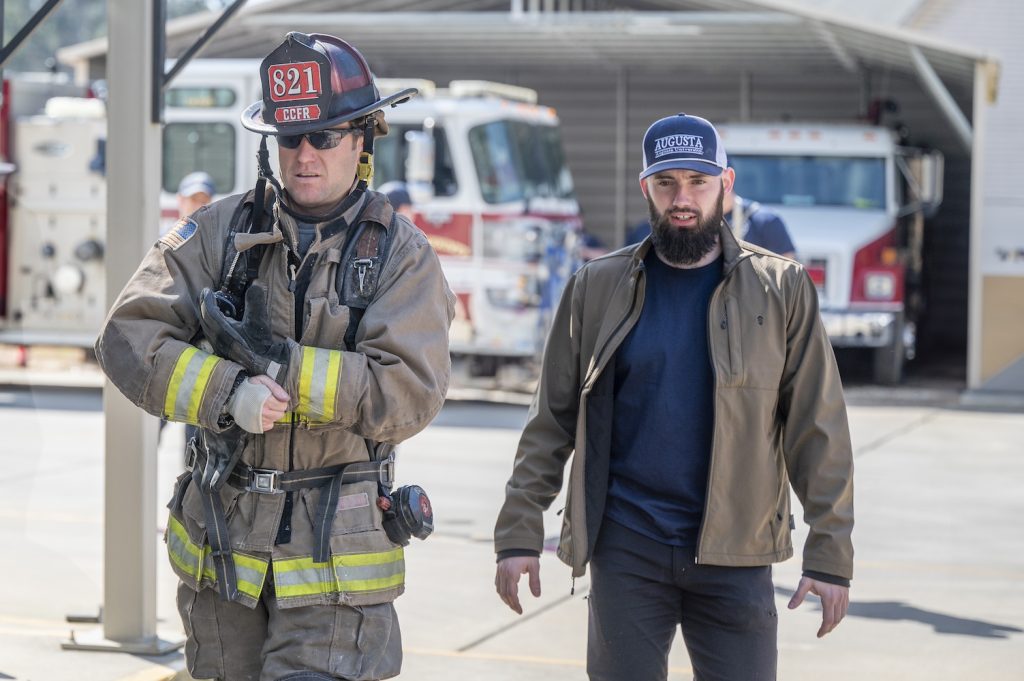
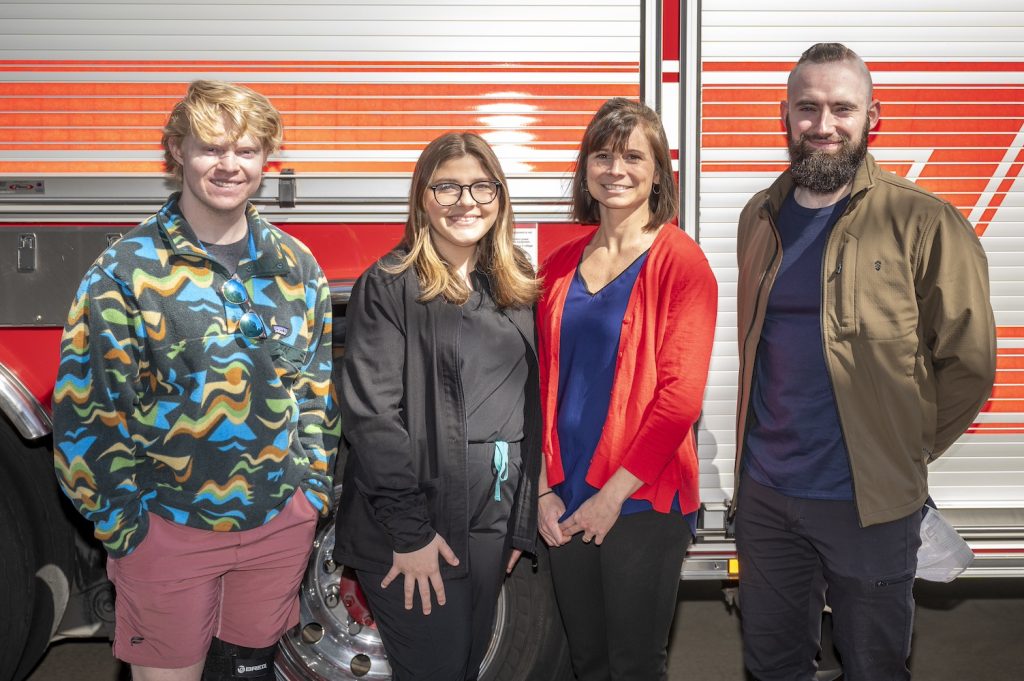
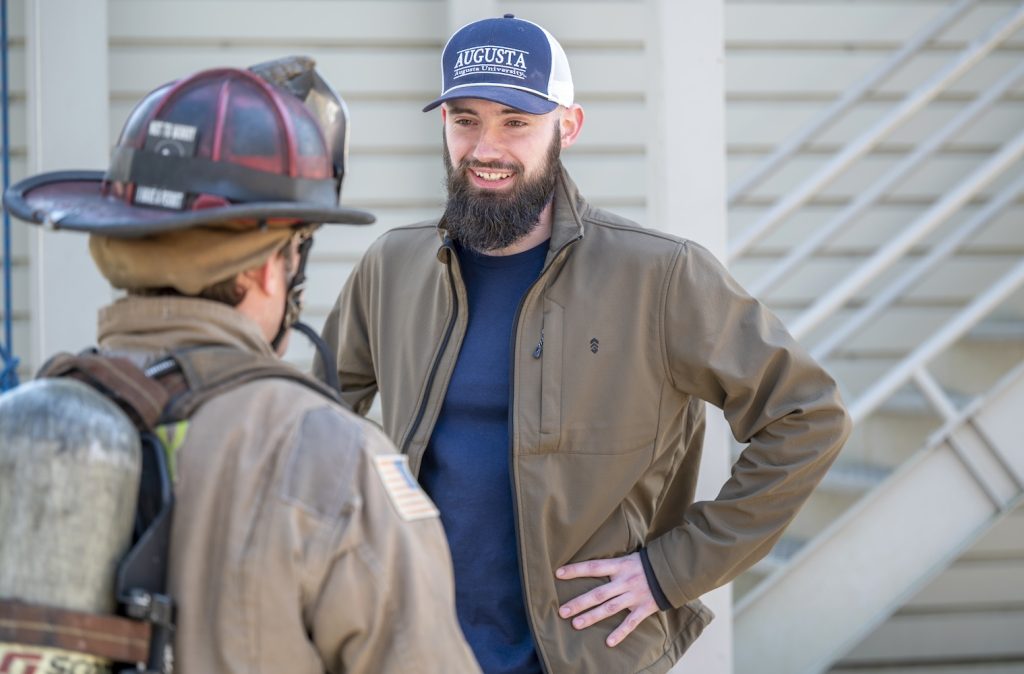
A Keiser sled is a simulated forcible entry-chopping device for training firefighters to use axes and sledgehammers in their occupation, Kohler said.
“All of those drills combined equal the full package of assessing the fire personnel,” Kohler said, adding that this assessment is done with the firefighters wearing their full gear. “They must do the drills with their heavy gear, and everyone has been given time to adapt to increasing amounts of gear.”
“They must do the drills with their heavy gear, and everyone has been given time to adapt to increasing amounts of gear.”
Austin Kohler, an adjunct instructor and PhD student in the Department of Kinesiology
While some individuals might be physically fit, when you add the additional elements of the weight of the gear, the tremendous heat and the challenge of maneuvering in tight spaces, it can be too much for some recruits, Parish said.
“The biggest thing is being able to work in the gear. It weighs about 75 pounds, and it restricts your movement,” Parish said. “It’s very hot. And if you have issues being claustrophobic in tight places, you have to get over that. So, there’s a difference with somebody being in shape outside the fire service.”
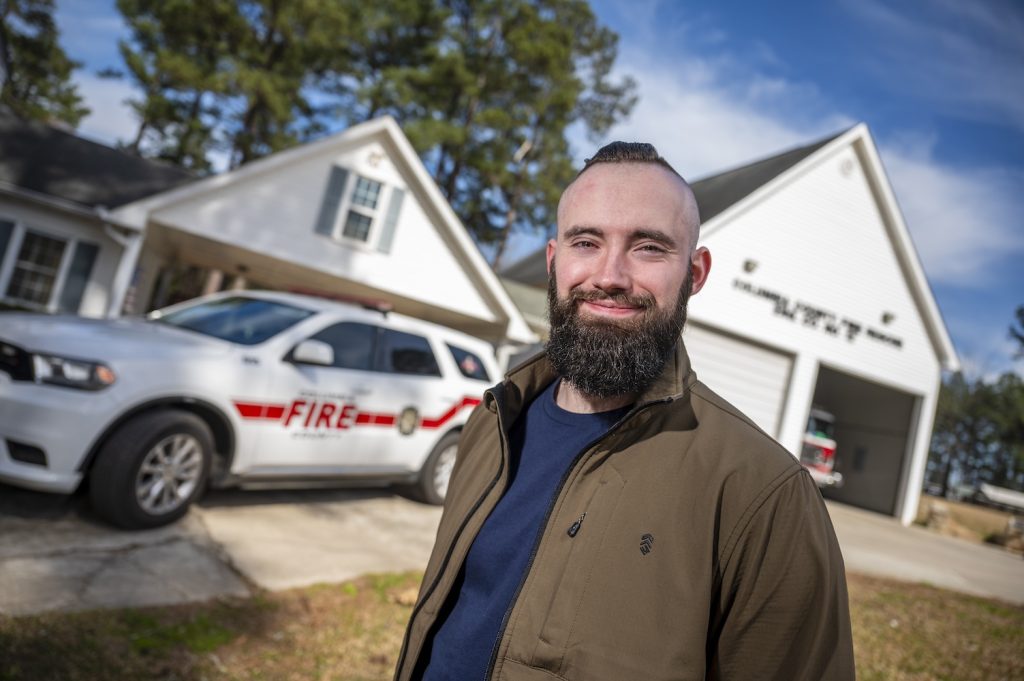
“They can be in good physical fitness, but being able to work in that gear is different because it brings your heart rate up and it brings your core temp up,” Parish said. “You can’t cool yourself off and you sweat a lot. It’s really stressful. So, you have to get acclimated to it and get to that certain fitness level to operate and deal with that stress on your body.”
“Many on-duty deaths of firefighters happen from cardiac complications because their cardiovascular system can’t handle the increased intensity for prolonged periods.”
Angelia “Maleah” Winkler, PhD, an associate professor of kinesiology
Over the past two years, Kohler has worked with more than 100 firefighters, and he has seen significant improvement in their overall health, he said.
“The biggest thing was seeing people adopt physical fitness as a priority,” Kohler said. “I also volunteered to come out and train their EMT classes in physical fitness. So, I work alongside some of the other instructors in that output, which is a product of people willing to increase physical fitness and shows a good buy-in from the fire service, which is what we originally wanted.”
Preparing firefighters helps the entire community
Along with the physical fitness study, Winkler and several kinesiology students have also conducted additional research on the firefighters’ hydration levels, as well as a tryptophan study to determine whether higher levels of protein impact the firefighters’ sleep quality.
David Shuler, a second-year graduate student in kinesiology, worked on the year-long study involving the firefighters’ protein levels. Specifically, 40 firefighters were asked to eat an additional 200 calories of peanut butter five days a week, he said.
“Dr. Winkler was looking at peanut butter to see if it had any effect on their sleep quality or their body composition in terms of daily energy,” Shuler said. “After all, firefighters are on call 24/7, so their sleep is probably not good if they get calls at three o’clock in the morning. So, we have wanted to see if peanut butter had an effect on that. Peanut butter also has a lot of protein in it, as well as a lot of fat, so we wanted to see if that would affect their daily energy levels.”

Tiffany Oberther, a fourth-year undergraduate kinesiology and pre-med student, worked with a statistician to collect data for the sleep study.
“Peanut butter has 65 milligrams per ounce of tryptophan in it,” Oberther explained. “And tryptophan is an essential amino acid that can help with serotonin and melatonin in the body, which are a neurotransmitter and a hormone that helps induce sleep.”
“In fact, about 50% of the fat concentration in peanut butter is monounsaturated fatty acids, which also aid in sleep health. Along with magnesium and vitamin E, they are beneficial sleep aids, as well,” she added. “It has been fascinating working with Dr. Winkler on this study.”
“As Columbia County grows, we are getting busier. Our call volume is going up 1,000 calls every year. Last year was the busiest year we ever had.”
Captain Steven Parish of the Columbia County Fire Rescue
By working with the kinesiology department, Parish said he feels the firefighters are better prepared at Day One for their jobs at the stations.
“As Columbia County grows, we are getting busier,” Parish said. “Our call volume is going up 1,000 calls every year. Last year was the busiest year we ever had. A lot more fire calls and a lot of medical calls, too, which adds to the stress. They’re running a lot more calls, so if you’re not working out and taking care of your body, the stress is going to weigh on you.”
Parish said he wants to make sure the firefighters are as prepared as possible when the fire bell rings.
“Augusta University has been an awesome partner,” Parish said. “This physical fitness test has done a good job, from a pre-hire standpoint, of assessing personnel to make sure that they can physically do the job before they start. It sets them up for success.”
Winkler said she has enjoyed working with the firefighters and helping to improve not only their health, but the safety of the entire community.
“Having a healthy fire department is super important for the community because you want a healthy firefighter rescuing you if you’re stuck in a burning building,” Winkler said. “Sometimes research can feel like, ‘What’s the meaning of this?’ But working with the firefighters the past few years has been very fulfilling. We know our research is having an impact, not just on the fire department, but all of Columbia County.”
 Augusta University
Augusta University
